Toyota Highlander Dashboard Warning Lights
The Toyota Highlander also known as the Toyota Kluger since 2000 and is now currently on the 4th generation. With modern advancements, the warning lights detailed here are most suited to the later versions of the Highlander.
In general, warning lights illuminate in 3 universal colors; green, yellow or red. Green lights symbolize a system that has been switched on. Yellow lights symbolize a system that has been switched off, where they are on by default, a maintenance schedule or a minor fault. Red lights symbolize an urgent issue that will require immediate attention.
Dashboard display layout and warning lights location may vary depending on your version of Toyota Highlander, or Toyota Kluger as it’s known in Australia and Japan.
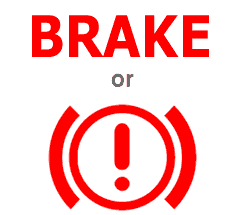 Brake System
Brake System
The red brake symbol may vary depending on whether it’s the USA, Canadian or European version of the Toyota Highlander, or the Toyota Kluger version in Australia.
The red brake symbol illuminates when there’s either low brake fluid level or that there’s a malfunction in the vehicle’s brake circuit. Stop as soon as possible and check brake fluid levels. If adding brake fluid, use: SAE J1703 or FMVSS No. 116 DOT 3, or SAE J1704 or FMVSS No. 116 DOT 4. If the brake warning remains lit after adding fluid, discontinue any driving and contact a Toyota workshop.
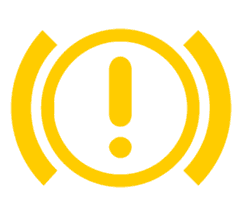 Yellow Brake Light
Yellow Brake Light
The yellow brake warning light illuminates due to a malfunction with the electric parking brake (EPB). The general components that can fail on an electric parking brake include defective parking brake switch, wiring issue, EPB Electronic Control Unit (ECU) and actuator mechanism. Low battery power can also affect the EPB.
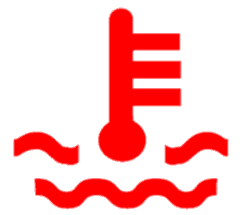 Temperature Warning
Temperature Warning
If the needle on the Toyota Highlander’s / Kluger’s temperate gauge enters the red zone and you experience a loss of engine power, it means the engine coolant is overheating. You may also experience steam coming from under the hood.
Immediately switch off the air conditioning system, stop the vehicle when safe to do so and switch off the engine. Allow the engine plenty of time to cool and check hoses and radiator for any leaks. If you observe coolant leaking from the system, contact a Toyota workshop.
Check coolant levels on the reservoir tank. Level should fall between the FULL and LOW level indicator. Add coolant is needed. In an emergency situation, normal water can be used, but the system must be flushed and a proper coolant mixture inserted as soon as possible. Once fluid is added, switch on the engine and the air conditioning system. The radiator cooling fan operates with the air con system – check the fan is working. If the radiator fan is working and the warning light goes off after adding fluid, you can continue your journey.
 Battery Charge Light
Battery Charge Light
The red battery light illuminates constantly informing of a fault with the electrical charging system. If the battery light comes on when you’re driving, immediately switch off and electrical systems that are not essential, such as radio, air con system etc.
As you may be unsure of what the exact fault is, it’s recommended that you make your way to the nearest vehicle workshop as the engine may stop if there isn’t enough electrical charge. Reasons for the battery light coming on can include alternator fault, loose or broken drive belts, loose battery connections or battery at the end of its lifespan. See why is my car battery warning light on for further information.
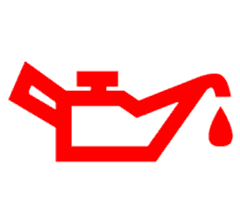 Low Oil Pressure
Low Oil Pressure
This red oil light is an indication of low oil pressure and not low oil levels. However, very low oil level can lower oil pressure resulting in the low oil level light coming on. If the low oil pressure warning light illuminates on your Toyota Highlander’s / Kluger’s dashboard while driving, pull off the road when it’s safe and immediately switch off the engine.
Check the oil level using the dipstick. If oil level is low, top up using ILSAC GF-5 multigrade engine oil with recommended viscosity: SAE
0W-20. Only continue driving if the oil light extinguishes. Low oil pressure means that engine components may not receive proper oil lubrication which can result in serious engine damage. For further information, see red engine coolant warning light on or flashing.
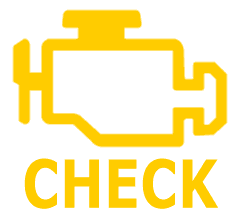 Check Engine Warning Light
Check Engine Warning Light
The Toyota Highlander / Toyota Kluger check engine warning light does not indicate a single fault and is instead generic, meaning that there are many malfunctions that can trigger the warning. The check engine light / malfunction indicator light (MIL) comes on when a fault has been detected with the vehicle’s:
- Electronic engine control system
- Electronic throttle control system
- Electronic automatic transmission control system
The first step to take if the engine warning light comes on is to have diagnostic scan equipment connected to the vehicle to read fault codes. Usually when the engine light comes on, a fault code is stored in the vehicle’s ECU. The scan equipment then reads the fault code and helps the engineer in locating the problem.
Provided that you are not experiencing a loss of engine power or engine misfiring, you can usually continue driving with the engine warning light on for a short period. However, have the problem fixed as soon as possible to prevent vehicle breakdown or further problems.
If the engine light flashes, reduce speed and avoid high engine load. If the engine light continues to flash, have the vehicle serviced immediately. For further information, see reasons why the engine warning light is on.
 Airbag Light
Airbag Light
Airbags are an important safety feature and can reduce the chances of fatality during a collision by 8 percent. If the Toyota Highlander / Toyota Kluger airbag warning light remains lit after engine ignition, it means the airbag or supplemental restraint system (SRS) may not operate in the event of a collision.
Some of the common reasons for the airbag light staying on can include:
- Debris in the seat belt catch
- Airbag sensors damaged due to water or previous collision
- Damaged misplaced wiring under the front seats
- Steering wheel cock spring fault
To locate the specific fault, use a diagnostic tool that’s capable of reading airbag fault codes. These can either be purchased or if your vehicle is booked into a vehicle workshop, their equipment will be used. A Toyota workshop will have tools equipped to deal with airbag faults.
 Brake Override
Brake Override
Toyota’s brake override system is designed to override the accelerator pedal press by bringing down engine revs when the brake pedal is simultaneously pressed. Essentially known as ‘smart pedal’, the system recognizes that the brake pedal and gas pedal are being pressed at the same time.
The technology then slows the car down safely by reducing engine revs regardless of the accelerator being pressed.
If the Toyota Highlander / Toyota Kluger brake override warning light illuminates, releases the accelerator pedal and press the brake pedal. If the brake override warning light illuminates along with an audible alert:
- Brake Override System is malfunctioning
- Drive-Start Control is operating
- Drive-Start Control is malfunctioning
- Parking Support Brake function (for static objects) is operating
 Electric Power Steering
Electric Power Steering
The electric power steering (EPS) warning light may illuminate in red or yellow. The red EPS warning light means that a complete failure of the EPS has occurred and steering during certain situations will be difficult. If the yellow EPS warning light comes on, it means a partial failure has occurred.
This may be due to a temporary overheating issue which can occur if the driver is constantly steering from left to right lock, or that the steering remains on full lock for an extended period of time while the engine is running.
 Low Fuel
Low Fuel
The low fuel warning light indicates that your Toyota Highlander / Toyota Kluger remaining fuel is approximately 2.7 gal. (10.2 L, 2.2 Imp. gal.) or less.
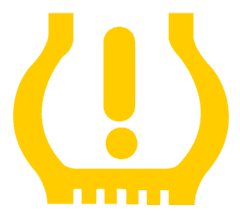 Low Tire Pressure
Low Tire Pressure
The Toyota Highlander / Toyota Kluger illuminates to alert that one or more tires has a loss of pressure. This may be due to a sudden loss of pressure (puncture) or a gradual pressure loss due to changes in ambient temperatures.
If the tire pressure warning light flashes, it means there’s a fault with the Tire Pressure Monitoring System (TPMS). The Toyota Highlander / Toyota Kluger uses sensors located in each tire to transmit pressure data to the vehicle’s receiver.
If a tire has been fitted without a sensor (such as the compact spare), the warning light will flash. Other common causes is due to sensor damage during tire change or rotation, sensor battery expired, or fitted tires that are not in accordance with Toyota’s guidelines.
Tire pressures should always be adjusted when cold. For further information on what cold tire pressure means and how to check tire pressures when cold or hot, see cold tyre pressure explained. For details on how to reset the TPMS, see Toyota Highlander tire pressure light reset.
 Master Warning Light
Master Warning Light
The yellow triangle with an exclamation point is the Toyota Highlander master warning light. The master warning light can illuminate or flash, it may illuminate with an audible warning sound and it may also illuminate along with another warning light. The master warning light should always come on along with a message describing the problem.
Reasons for the master warning light coming on vary from urgent faults such as low oil pressure, to less urgent faults such as a loose gas cap or door ajar. For further information on this symbol, see Toyota master warning light explained.
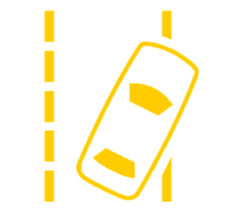 Lane Tracing Assist
Lane Tracing Assist
The Toyota Highlander / Toyota Kluger Lane Tracing Assist (LTA) / Lane Departure Warning alerts the driver with a warning light, audible signal when the vehicle has unintentionally left a lane. The system provides a small amount of steering assistance to correct the course of the vehicle back into the lane.
The Lane Tracing Assist warning light illuminates under the following conditions:
- White: LTA system is operating.
- Green: Steering wheel assistance of the steering assist function or lane centering function is operating.
- Flashing in yellow: Lane departure alert function is operating.
- Illuminate in yellow: LTA system has a malfunction.
LTA makes use of a center-mounted camera at the top of the windshield and a radar located in the vehicle’s front grille. For optimal operation, ensure these areas are kept clean from dirt and debris.
 Stop and Start
Stop and Start
In order to improve fuel economy, the Toyota Highlander / Toyota Kluger stop start system stops and starts the engine according to brake pedal or gear shift lever operation when the vehicle is at a standstill. The constant flashing of the stop start unavailable warning light ![]() or the stop start off warning light
or the stop start off warning light ![]() indicates a a malfunction with the system.
indicates a a malfunction with the system.
The Toyota Highlander’s ECU checks specific conditions that must be met in order for engine stop to be automatically initiated. For further information on these conditions, see Toyota Highlander stop start not working.
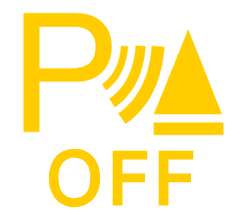 Parking Assist
Parking Assist
The Toyota Highlander / Toyota Kluger park assist function helps drivers to parallel park or maneuver into a space via the use of sensors that communicate distance via an audible signal and visual guide on the information display. There are three sensors on the front bumper and three on the rear.
If the parking assist off warning light flashes, it indicates a malfunction with the system. Ensure the areas around the sensors are kept clean and clear of debris to allow optimal use. If the vehicle has had a minor knock on the bumper, it may affect the sensors.
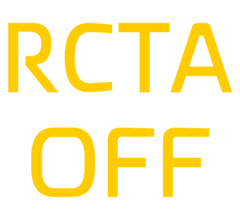 Rear Cross Traffic Alert
Rear Cross Traffic Alert
The Toyota Highlander / Toyota Kluger Rear Cross Traffic Alert (RCTA) function uses rear side radar sensors to detect vehicles approaching from the rear right or left of the vehicle when backing out of a parking space.
The system alerts the driver of the presence of such vehicles by flashing a warning light inside the door mirrors and by sounding a audible alert. If the RCTA off warning light flashes, it indicates a fault with the system. Ensure the sensors on the rear bumper are clean and clear of debris.
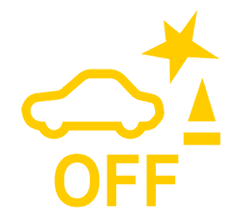 Parking Support Brake
Parking Support Brake
The Toyota Highlander / Toyota Kluger parking brake support system uses ultrasonic sensors, three in the rear bumper and three in the front bumper. The system is designed to warn the driver at slow speed of a potential collision. If the system determines that a collision is extremely high, the brakes are automatically applied.
If the parking support brake off warning light flashes along with an audible signal, it means the system has malfunctioned. If there is no audible signal but the light flashes, it means the system is temporarily unavailable. This may be due to the sensors in the bumpers being covered in dirt, snow etc.
 Pre-Collision System
Pre-Collision System
The Toyota Highlander / Toyota Kluger pre-collision system uses a radar located in the vehicle’s front grille and a camera located at the top-center of the windshield to monitor objects in front of the vehicle.
If it’s determined that a collision is high, a warning is issued with the possibility of automatically braking the vehicle. If a frontal collision is very high, the system automatically applies the vehicle’s brakes.
If the pre-collision off warning light flashes along with an audible alert, it means the system has malfunction. If the pre-collision off light flashes without an audible alert, it means the system is temporarily unavailable.
This may be due to the radar or camera sensor being obstructed. The camera sensor can occasionally overheat when the vehicle is parked in direct sunlight, but the system will resume when cooled. The warning will also flash if vehicle stability control is disabled.
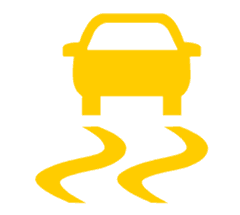 Vehicle Stability Control
Vehicle Stability Control
The Toyota Highlander / Toyota Kluger vehicle stability control (VSC) warning light will flash to indicate the system is operating. VSC helps the driver to maintain control during cornering by reducing understeer and oversteer and helps to maintain traction while accelerating. If the VSC warning light remains constantly lit, it means there’s a fault with:
- The VSC system
- The TRAC system (traction control system)
- Trailer Sway Control
- Hill-start assist control system
If VSC has malfunctioned, it’s often due to one of the wheels speed sensors that has malfunction. If the check engine warning light is on and you’re experiencing reduced engine power, it’s common that VSC is automatically disabled and once the fault causing the engine light to come on is fixed, the VSC warning light will go off. VSC is otherwise known as ESC, for further information, see how does ESC work in cars.
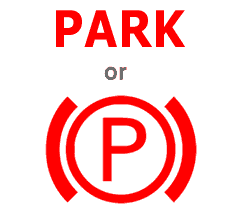 Parking Brake
Parking Brake
The red parking brake warning light illuminates when the parking brake has been applied. If the parking brake flashes, it might be due to the parking brake not being fully engaged or fully released.
 Brake Hold
Brake Hold
The Toyota Highlander / Toyota Kluger brake hold system automatically applies the hydraulic brakes when the vehicle comes to a standstill, meaning that the driver can freely release their foot from the brake pedal. The brakes are automatically released when the accelerator is pressed. If the yellow hold warning light flashes ![]() , it means there’s a fault with the brake hold system.
, it means there’s a fault with the brake hold system.
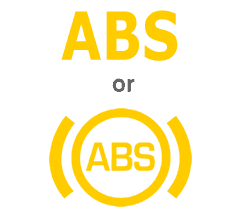 Anti-Lock Braking System
Anti-Lock Braking System
The anti-lock braking system (ABS) is a safety feature that’s now incorporated into almost all new vehicles. By preventing the wheels from locking during hard braking, ABS allows the driver to continue to steer the vehicle, possibly avoiding an impact.
If the Toyota Highlander / Toyota Kluger ABS warning light remains constantly lit, it means ABS has malfunction. Typically this is due to a faulty wheels speed sensor (first to look at) or the ABS module. Although ABS is an extension of your vehicle’s hydraulic brakes, ABS is independent and if malfunctioning, your brakes will continue to operate as normal, but without the function of ABS.
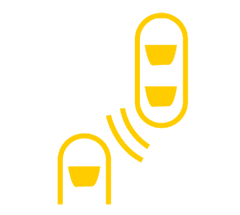 Blind Spot Monitor
Blind Spot Monitor
On each rear-side of your vehicle is a blind spot – an area that you cannot see into using your mirrors. By using radar sensors located on each corner or the rear bumper, the blind spot monitor assists the driver with changing lanes safely. If the blind spot monitor unavailable message appears, it can often be due to one of the sensors being obscured by dirt, snow etc.
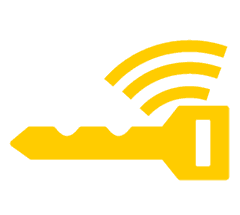 Smart Key
Smart Key
The smart key warning light should illuminate when you enter the vehicle with the parking brake applied, the gear shift lever in ‘P’ and with your foot firmly applied to the brake pedal. Possible reasons for a failure to start the engine can include:
- Battery in electronic key is depleted
- Nearby radio waves causing ‘noise’
- The key is in close contact with other metallic objects
- Other wireless keys are nearby
- Metallic objects are on or near the rear window
 Immobilizer
Immobilizer
To indicate that the system is functioning correctly and that the engine has been immobilized, the immobilizer warning light flashes after the engine has been switched off.
 Low Outside Temperature
Low Outside Temperature
The snowflake symbol illuminating comes on because the outside temperature is low and there may be a risk of slippery icy roads. When the warning light comes on, the ambient outside temperature is 37°F (3°C) or lower.
 Automatic High Beams
Automatic High Beams
The Toyota Highlander / Toyota Kluger automatic high beams function uses the camera sensor located at the top-center of the windshield to asses outside brightness, other vehicles and street lights. The system will then automatically switch on and off your vehicle’s high beams. The system isn’t always accurate, so be prepared to turn off high beams if necessary.
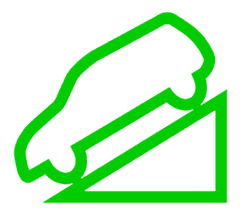 Downhill Assist
Downhill Assist
Downhill Assist is designed to prevent excessive speed on steep downhill slopes of speed of 18 mph or under. To activate, press the button on the center console and the warning light will illuminate on the dashboard. The ABS along with the traction control system will moderate the Highlander’s speed during descent.
If the Downhill Assist warning light flashes, it means either the shift lever is in the ‘P’ position, the vehicle has exceeded 18 mph or the brake system has overheated.
 ECO Driving
ECO Driving
The Toyota Highlander has an ECO driving function that id designed to encourage a style of driving that reduces fuel consumption. When your driving style is Eco-friendly, the green ECO indicator light illuminates.
An ECO bar can also be visualized to help you assess your level of acceleration that keeps the car within lower fuel consumption.
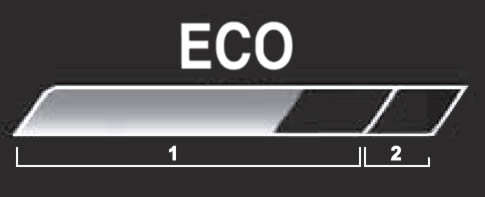
- This is the Eco zone. Provided that acceleration bar stays within this zone, the green ECO light will remain lit.
- If the acceleration bar extends into zone 2, you will no longer be Eco-driving and the green indicator light will go off.
 Driving Modes
Driving Modes
The Toyota Highlander has various driving modes that can be selected depending on weather and road conditions. Various modes can be selected via the switch on the center console. The driving modes available for the Toyota Highlander are as follows:
- Normal mode: Provides an optimal balance of fuel economy, quietness, and dynamic performance. Suitable for normal driving
- Sport mode: Transmission and engine operates to provide quick acceleration. The steering feel will also be changed to a more responsive feel.
- Eco drive mode: Gear shifts will occur sooner, heling to save fuel and drive in a more eco-friendly manner. The system also controls operation of the operation of the air conditioning system (heating/cooling).
- Mud & Sand mode: Suitable for driving on roads with increased driving resistance such as sandy roads, muddy roads, etc
- Rock & Dirt mode: Suitable for driving in bumpy road conditions, such as on unpaved forest roads.
- Snow mode: This mode can be selected to suit the conditions when driving on slippery road surfaces, such as on snow and ice.
Toyota Highlander Warning Messages
In some instances, rather than a warning light, a warning message may be displayed instead. The Toyota Highlander warning messages may include:
| Warning Message |
|---|
| “Engine Oil Level Low Add or Replace” |
| Explanation |
| The engine oil level is low. Check the level of the engine oil, and add if necessary. The low oil level message may also appear of the vehicle is stopped on a slope. Move the vehicle to a level surface. |
| Warning Message |
|---|
| “Headlight System Malfunction Visit Your Dealer” |
| Explanation |
This message means the following systems may be malfunctioning and require inspection:
|
| Warning Message |
|---|
| “High Power Consumption Partial Limit on AC/Heater Operation” |
| Explanation |
| If this warning message is displayed frequently, it indicates a possible malfunction relating to the vehicle’s charging system or the battery may be deteriorating. |
| Warning Message |
|---|
| “High Transmission Fluid Temp See Owner’s Manual” |
| Explanation |
| If this warning message is displayed, the vehicle will automatically go into transmission protection mode. Reduce vehicle speed and if necessary the vehicle’s load. Stopping the vehicle in a safe place, while leaving the engine running will often help. Depending on the vehicle, the warning messages “AWD System Overheated Switching to 2WD Mode” or “AWD System Overheated 2WD Mode Engaged” may display. |
| Warning Message |
|---|
| “Engine Coolant Temp High Stop in a Safe Place See Owner’s Manual” |
| Explanation |
| Follow the procedure of the red temperature warning light as detailed above. |
| Warning Message |
|---|
| “Oil Maintenance Required” |
| Explanation |
| This message means that the engine oil and filter should be changed. After changing the engine oil, reset the oil service / maintenance message. To reset the Toyota Highlander oil service maintenance message, for versions 2019 onwards:
For versions of the Toyota Highlander with the 4.2 inch display
For versions of the Toyota Highlander with the 7 inch display
|
| Warning Message |
|---|
| “Maintenance Required Visit Your Dealer” |
| Explanation |
| This message means that all maintenance is required to correspond to the driven distance on the maintenance schedule of the vehicle. The message comes on approximately 5000 miles after the message has been reset.
After vehicle maintenance has been carried out, the maintenance message must be reset. To reset the Toyota Highlander maintenance message, for versions 2019 onwards: For versions of the Toyota Highlander with the 4.2 inch display
For versions of the Toyota Highlander with the 7 inch display
|
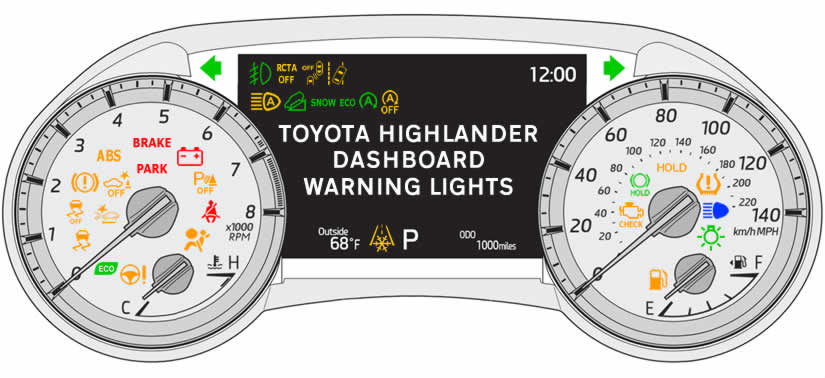
What does the mph stand for or mean on the 2019 highlander plus?? It shows up on the display and I don’t know what it means
miles per hour ?